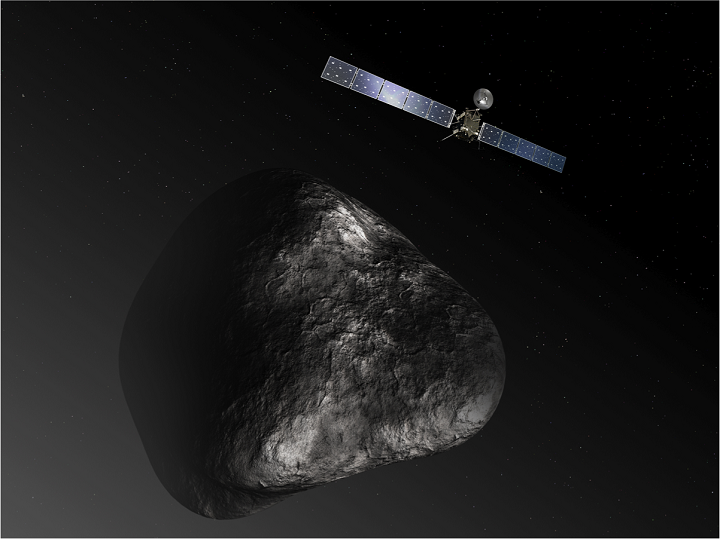Three NASA science instruments aboard the European Space Agency’s (ESA) Rosetta spacecraft, which is set to become the first to orbit a comet and land a probe on its nucleus, are beginning observations and sending science data back to Earth.
Launched in March 2004, Rosetta was reactivated in January 2014 after a record 957 days in hibernation. Composed of an orbiter and lander, Rosetta’s objective is to arrive at comet 67P/Churyumov-Gerasimenko in August to study the celestial object up close in unprecedented detail and prepare for landing a probe on the comet’s nucleus in November.
Rosetta’s lander will obtain the first images taken from a comet’s surface and will provide the first analysis of a comet’s composition by drilling into the surface. Rosetta also will be the first spacecraft to witness at close proximity how a comet changes as it is subjected to the increasing intensity of the sun’s radiation. Observations will help scientists learn more about the origin and evolution of our solar system and the role comets may have played in seeding Earth with water, and perhaps even life.
Rosetta currently is approaching the main asteroid belt located between Jupiter and Mars. The spacecraft is still about 300,000 miles (500,000 kilometers) from the comet, but in August the instruments will begin to map its surface.
The three U.S. instruments aboard the spacecraft are the Microwave Instrument for Rosetta Orbiter (MIRO), an ultraviolet spectrometer called Alice, and the Ion and Electron Sensor (IES). They are part of a suite of 11 science instruments aboard the Rosetta orbiter.
